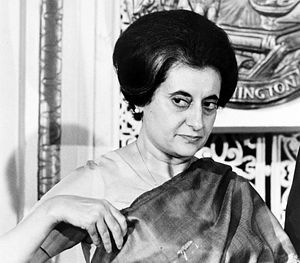Operation Lal Dora, a shelved 1983 plan by the Indian government to militarily intervene in the small Indian Ocean island state of Mauritius to prevent a coup, is a fascinating piece of Indian Ocean history and sheds light on how New Delhi thinks about the region. A 2013 paper authored by David Brewster and Ranjit Rai highlights a range of interesting developments in Indian military planning and strategic thinking around the operation, long seen as a perfunctory footnote in India’s Cold War history. Contrary to received wisdom about India’s inability to extricate itself from “non-aligned” thinking during the Cold War, Indira Gandhi’s government was quite ready to apply the levers of hard power against to protect Indian interests. Finally, the episode highlights the embarrassing degree to which the different branches of the Indian armed forces were stove-piped at the time; the Indian Army had no idea what the Navy was up in the planning phase of the operation and vice versa.
Mauritius, with a large Hindu community and geographic proximity to India, is a close partner for New Delhi. The country has long been seen from New Delhi as a “little India” in the Indian Ocean–when Narendra Modi, the current Indian prime minister, visited Port Louis in March as part of a broader Indian Ocean tour, he called it “Chhota Bharat” (Little India), hearkening back to the term that was made popular by Indian Prime Minister Indira Gandhi, the first Indian prime minister to officially visit Mauritius in 1970.
In the early 1980s, though, New Delhi sensed that its special relationship with Mauritius could be threatened by the emergence of a new government that could subvert the interests of the island’s Hindu population in favor of minorities. As Brewster and Rai note, there was concern that policies favored by Paul Berenger, a firebrand pro-Soviet leftist cabinet official in the government of Prime Minister Anerood Jugnauth could “favor the Creole and Muslim minorities and potential provoke a refugee exodus by Hindus.”
Jugnauth, whose opposition Mouvement Militant Mauricien party managed to defeat the long-standing India-backed Mauritian Labour Party government led by Seewoosagur Ramgoolam, was initially welcomed by the Indian government. Ultimately, frictions between Jugnauth and Berenger led the former to approach India for support. Berenger, in addition to being seen as favoring policies that would have been deleterious for Mauritian Hindus, “called for close ties with Libya, the Soviet Union, and socialist-leaning African states.” This in itself wouldn’t have bothered New Delhi, which had signed a treaty of friendship with the Soviet Union in 1971, but the MMM and Berenger’s sympathy for Muammar Gaddafi’s Libya in particular drew scorn: “Libya was financing the conversion of Mauritian Hindus to Islam.” Ultimately, Berenger and his supporters came to represent a coup risk, leaving Jugnauth cornered and New Delhi anxious about possibly losing an important client state in the Indian Ocean.
By mid-1983, when the rift between Jugnauth and Berenger had manifested more clearly and fears of a coup were real, top Indian military planners were readying the country for military intervention. Here I recommend referring to Brewster and Rai’s paper, where they detail the tremendous military planning and bureaucratic hurdles that ultimately left Operation Lal Dora, the name for India’s planned intervention in Mauritius, dead-on-arrival. The Indian Army and Navy exhibited a tremendous lack of coordination; their most senior leaders saw each other as adversaries. If India’s modest naval and amphibious warfare capabilities at the time made successful intervention unlikely, a stumbling leadership and strategic disagreements at the top levels of political and military planning sealed the operation’s fate. Indira Gandhi ultimately shelved the operation. In the end, there was no coup, suggesting that rumors of an Indian mobilization adequately conveyed New Delhi’s resolve in supporting Jugnauth at the time. From 1983 onward, India’s influence in Mauritus has persisted.
While the episode represented an interesting moment of strategic convergence between the United States and India at the height of the Cold War, it did not lead to any real sustained cooperation in the Indian Ocean. Today, New Delhi and Washington publicly acknowledge their convergent interests in the Indian Ocean region.
It’s hard to imagine New Delhi using instruments from the toolkit of hard power today in the Indian Ocean to reign in states that are drifting out of India’s orbit (the Maldives comes to mind here). Still, India today continues to see the Indian Ocean as its rightful backyard. In terms of geopolitical competition, matters are simpler today for India than they were in the 1980s. Where New Delhi had to decide between its alignment with the Soviet Union and its interests in the Indian Ocean, the contemporary challenge posed by China’s attempts to build strategic ties in the region present no such conflict.
The full paper (PDF) by Brewster and Rai delves into the topics I touched on above in greater detail.

































